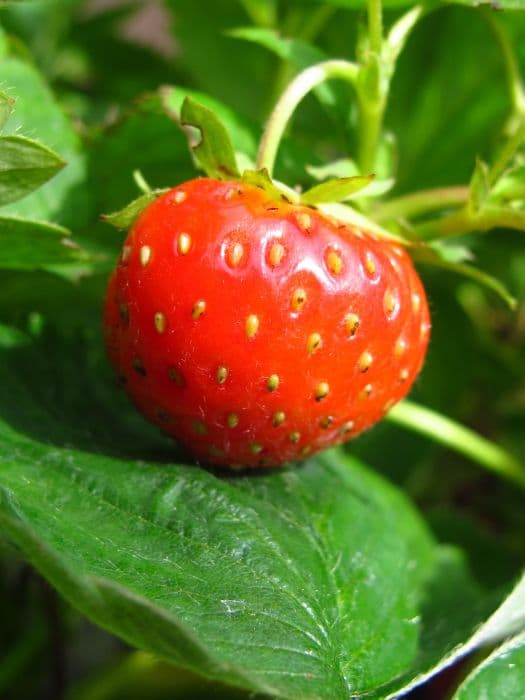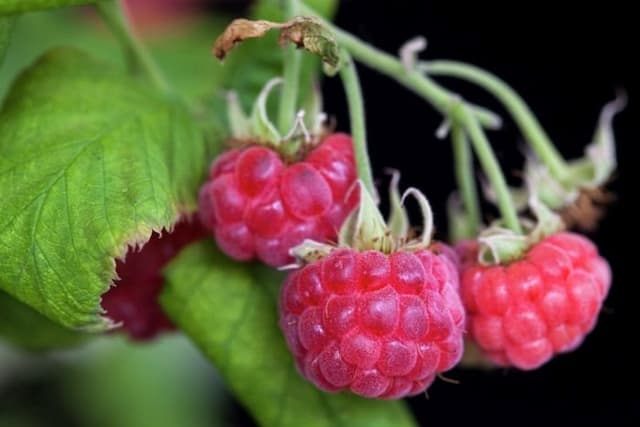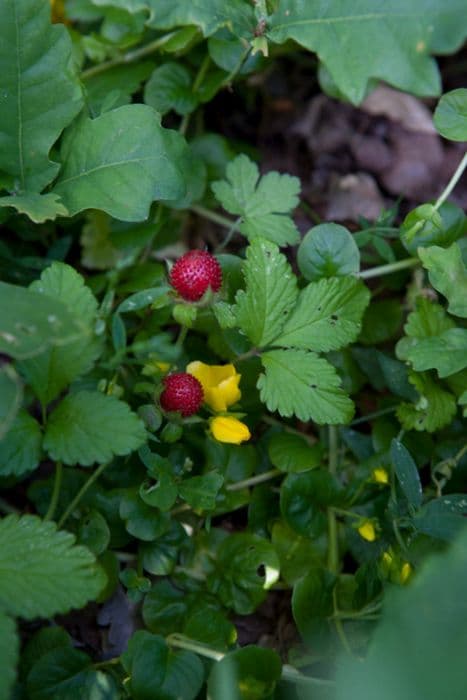Peach 'Bonanza' Prunus persica 'Bonanza' (F)

ABOUT
'Bonanza' is a naturally dwarf peach well-suited to container cultivation. Pretty pink flowers in early spring are followed in late summer by large, juicy, yellow-fleshed, red- and yellow-skinned fruit. It is self-fertile and fruits from an early age
About this plant
 Names
NamesFamily
Rosaceae
Synonyms
Bonanza Dwarf Peach, Dwarf Bonanza Peach
Common names
Prunus persica 'Bonanza'
 Characteristics
CharacteristicsLife cycle
Perennials
Foliage type
Deciduous
Color of leaves
Green
Flower color
Pink
Height
5 feet (1.52 meters)
Spread
5 feet (1.52 meters)
Plant type
Tree
Hardiness zones
5-9
Native area
China
Benefits
 General Benefits
General Benefits- Compact size: Prunus persica 'Bonanza' is a dwarf peach tree, making it suitable for small gardens or confined spaces.
- Decorative flowers: Produces beautiful pink blossoms in spring, adding aesthetic value to the landscape.
- Fruit production: It bears edible peaches, allowing for fresh fruit directly from the garden.
- Pollinator attraction: Its flowers attract bees and other pollinators, supporting local ecosystems.
- Shade provision: Can offer shade in garden settings, creating a cool area during warm weather.
- Seasonal interest: Provides changing interest throughout the seasons with blossoms, fruit, and autumn foliage.
- Hardiness: As a deciduous tree, it is hardy and can adapt to a variety of climatic conditions within its growing zones.
 Medical Properties
Medical Properties- Antioxidant effects: The leaves and fruit of Peach (Prunus persica 'Bonanza') contain compounds with antioxidant properties, which can help in reducing oxidative stress in the body.
- Anti-inflammatory properties: Certain components in Peach may possess anti-inflammatory effects that could potentially assist in alleviating inflammation-related conditions.
- Antimicrobial activity: Peach parts may have some level of antimicrobial activity against a range of pathogens, which makes them of interest in traditional medicinal systems.
 Air-purifying Qualities
Air-purifying QualitiesThis plant is not specifically known for air purifying qualities.
 Other Uses
Other Uses- The dwarf peach tree can be utilized in fairy gardens or miniature landscapes due to its smaller size, presenting an opportunity for creative gardening on a tiny scale.
- Wood from the dwarf peach tree can be used in woodworking or crafting, especially for making small decorative items or for wood turning projects.
- The flowers of the dwarf peach tree can be used for ornamental purposes in arrangements and bouquets, offering a delicate and fragrant floral option.
- The leaves of the dwarf peach tree can serve as a natural dye, giving fabrics a range of warm yellow to green hues.
- As a bonsai specimen, the dwarf peach tree is sought after by enthusiasts for its beautiful blossoms and the challenge it presents in miniature tree shaping.
- The fallen leaves of the dwarf peach tree can be gathered and used as a component in creating nutrient-rich compost for gardens.
- The thin branches can be used in the art of basket weaving, adding a unique peach wood texture to the finished product.
- During seasonal events, the tree itself can be decorated with lights and ornaments, serving as an outdoor holiday festive feature.
- In culinary arts, the dwarf peach tree's blossoms can be candied or used as an edible decoration for desserts and special dishes.
- The tree can be planted as part of a wildlife-friendly garden to attract pollinators such as bees and butterflies, enhancing local biodiversity.
Interesting Facts
 Feng Shui
Feng ShuiThe Peach tree is not used in Feng Shui practice.
 Zodiac Sign Compitability
Zodiac Sign CompitabilityThe Peach tree is not used in astrology practice.
 Plant Symbolism
Plant Symbolism- Longevity: Bonanza Peach is a variety of peach tree, and peaches in general are associated with long life and immortality in Chinese culture, primarily because the peach tree is considered by tradition to be the tree of life.
- Youthfulness and Regeneration: The peach fruit, with its juicy and vibrant flesh, is often seen as a symbol of youth and its ability to renew itself, which echoes the rejuvenating properties attributed to it in many myths.
- Femininity: The delicate pink flowers of the Bonanza Peach may be associated with feminine beauty and softness, reflecting cultural notions of gender and aesthetics.
- Love and Romance: In some contexts, the peach is used to symbolize romance and marital bliss, possibly owing to its sweet flavor and the sensual pleasure of eating the fruit.
- Fertility: The fecundity of the peach tree, which produces an abundance of fruit, has made it a symbol of fertility and abundance in various cultures.
- Protection: Folk beliefs in some regions hold that peach wood and leaves have the power to ward off evil, and so the peach tree, including the Bonanza Peach variety, can symbolize safety and protection.
- Innocence: The pure and fresh quality of the fruit can also lead to its association with innocence, an attribute often depicted in art and literature.
 Water
WaterDwarf Peach trees should be watered deeply once a week, providing about 1 to 2 gallons of water each time, depending on the size of the tree and the weather conditions. During hot, dry periods, you might need to water more frequently, especially if the peach tree is newly planted and still establishing its root system. It is important to avoid over-watering, as this can lead to root rot. The soil should be moist but not waterlogged. During the winter months, when the tree is dormant, water less frequently, ensuring the root ball does not dry out completely.
 Light
LightDwarf Peach trees thrive best in full sun, where they can receive at least six hours of direct sunlight each day. An ideal location is in a south-facing spot that is free from any shade that may be cast by buildings or taller plants. Adequate sunlight is crucial for good fruit production and overall health of the tree.
 Temperature
TemperatureDwarf Peach trees prefer a temperate climate with cold winters and warm summers. They can tolerate temperatures as low as 0°F but frost during the flowering period can damage the blossoms. The ideal temperature range for growing a healthy peach tree is between 75°F and 85°F during the growing season. They require a chilling period with temperatures below 45°F to set fruit.
 Pruning
PruningPruning Dwarf Peach trees is important to maintain their shape, manage size, and ensure productive fruiting. Pruning should be done in late winter or early spring before the sap starts to rise and the tree begins a new growth cycle. The tree should be pruned to remove dead or diseased branches, to thin out crowded branches, and to shape the tree for better sunlight penetration and air circulation.
 Cleaning
CleaningAs needed
 Soil
SoilThe Dwarf Peach Tree, commonly known as 'Bonanza,' thrives in well-drained, loamy soil with a pH between 6.0 and 7.0. A mix of two-thirds loam and one-third aged compost or well-rotted manure will provide the necessary nutrients and structure. It's also beneficial to incorporate a slow-release fertilizer designed for fruit trees.
 Repotting
RepottingDwarf Peach Trees like 'Bonanza' should be repotted every 2-3 years to prevent root crowding and replenish nutrients. Choose a container one size larger than the current one to ensure adequate space for growth.
 Humidity & Misting
Humidity & MistingDwarf Peach Trees like 'Bonanza' prefer moderate humidity levels but are quite adaptable. It's important to ensure that they are not placed in overly humid environments as it can promote fungal diseases.
 Suitable locations
Suitable locationsIndoor
Ensure bright light, well-draining soil, and regular watering for 'Bonanza.'
Outdoor
Plant in full sun, well-draining soil, and protect from harsh winds.
Hardiness zone
5-9 USDA
 Life cycle
Life cycleThe Peach 'Bonanza' begins its life cycle as a dormant seed, requiring a period of cold stratification to break dormancy. Upon sprouting, it develops into a seedling and, given proper conditions, grows into a juvenile tree. This dwarf variety enters a vegetative state with dense foliage, and as it matures, it starts the process of flowering, usually in early spring, characterized by pink blossoms. Following pollination, the flowers develop into fruit, which ripen typically in mid to late summer, depending on climate and conditions. The tree then enters a period of senescence in the late growing season, shedding leaves as it goes dormant for the winter. This cycle repeats annually, with the tree potentially producing fruit for many years, on the proviso it receives appropriate horticultural care and remains disease-free.
 Propogation
PropogationPropogation time
Spring-Early Summer
The most popular method of propagating the Dwarf Peach Tree 'Bonanza' is through softwood cuttings. This process typically occurs in late spring to early summer when the tree's new growth is mature enough to be firm yet still flexible. Gardeners take cuttings from healthy branches that are about 4 to 6 inches long, ensuring that each cutting has several leaves. The bottom leaves are removed, and the cut end is dipped in a rooting hormone before being placed in a well-draining potting mix. The cuttings must be kept in a warm, moist environment with indirect sunlight, which encourages root development. In a few weeks, the cuttings will have developed enough roots to be transplanted into a larger pot or directly into the garden.









